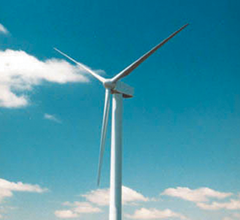The Cost of Wind
 Dorit McCann and Gary McGhee discuss wind farm clusters.
Dorit McCann and Gary McGhee discuss wind farm clusters.
In April 2011, the Utility Regulator approved the development by NIE of a new charging methodology for connecting groups of generators to the NI distribution system. The new connection charging methodology will be based on NIE’s Hybrid model which provides that each developer will pay in proportion to their share of the connection capacity. The model was adopted following a consultation by NIE on the subject in 2010.
The reason for the new charging methodology is NIE’s concern that not all wind farms can be connected using sole overhead power lines. NIE has indicated that each wind farm will be considered individually for connection to either a cluster or a dedicated line. This article looks at the implications the new approach will have for wind farm developers.
Background
NIE’s licence requires it to prepare an annual Statement of Charges for Connection to the NI Distribution System with the approval of the Utility Regulator.
Up to now, the general practice in NI has been to connect wind farms individually. This has largely been due to the fact that differences in timing of planning approvals for wind farms does not suit the formation of groups.
In March 2010, NIE issued a consultation on the Charges for Connecting Groups of Generators to the NI Distribution System which resulted in a report in October 2010 in which the Option 3 Hybrid model was favoured. The Utility Regulator has now in principle approved the concept of clustering in line with the practice in Ireland and Great Britain. The Utility Regulator believes that clustering of wind farms will reduce the environmental and visual impact as a result of only one main circuit.
The Hybrid Model
The basis of the Hybrid model is that each developer will pay in full for the sole use assets and will pay a proportion of the shared asset costs based on their share of the connection capacity. A number of potential issues can arise which are considered below.
(1) What happens if the capacity of the first transformer in a cluster is not fully utilised?
Each developer pays in full for the sole use assets and pays for a share of the joint assets based on the fraction of the total connection capacity, e.g. if the connection capacity is 80MW, and the first generator to connect had a capacity of 26MW, it would pay 26/80th of the cost of the shared assets.
(2) What happens if the capacity of the first transformer is fully utilised and a second transformer is installed at the wind cluster point?
This would occur where an additional developer bought a connection which would cause the total connected generation capacity to be greater than the connection capacity, thus requiring the addition of a further transformer at the wind cluster point. This is likely to lead to refunds to those already connected, based on the relative usage of the shared assets. The current refund period as set out in the Electricity (Connection Charges) Regulations (NI) 1992 is 5 years but the Utility Regulator will recommend that this period is changed to 10 years2.
For example, if the connection capacity of the first transformer is 60MW and developers 1 and 2 each buy connections of 28MW, they would each pay 28/60th of the shared asset costs. If developers 3 and 4 subsequently buy 28MW and 15MW respectively and a further transformer with a capacity of 60W is installed, developers 4 and 5 would pay 28/120th and 15/120th respectively of the total connection capacity. Developers 1 and 2 would receive a refund based on the difference between their initial payment and their share of the total enhanced connection capacity (i.e. 28/120th each).
(3) What happens if generation capacity from an additional transformer is relatively small and the cost of enhancing the capacity is relatively large?
The principle in these circumstances is that no developer should be required to pay additional connection charges.
Under the Hybrid model, it is possible that some of the costs of the shared assets would never be recovered from the developers as, i.e. where the generation capacity connected does not equal the connection capacity. In this case, NIE has indicated that the balance will need to be recovered from suppliers through system charges and ultimately NI customers. Therefore, the capacity of the transformer initially installed at the cluster substation must be matched as closely as possible to the anticipated generation connected in the medium term.
Next steps
NIE will now revise its Statement of Charges for Connection to the NI Distribution System and submit it to the Utility Regulator for approval. In addition each cluster will be subject to individual approval from the Utility Regulator.
More generally, the Utility Regulator has also indicated that it will explore a change in the definition of “connection assets” to ensure that costs for connection to the distribution system are transparent and fair and do not place an unreasonable financial burden on customers and generators looking to connect. The Regulator will also investigate further the introduction of a contractually binding duration within which NIE must carry out connection works and the potential introduction of incentives options to reduce connection and quotation times. Finally, the Utility Regulator has said that it will ensure that Grid Code and Trading and Settlement Costs are reflected in the Statement of Charges for Connection to the NI Distribution System going forward3.
Comment
The issues of timing and cost are of paramount concern to all windfarm developers. With regard to the issue of timing, it remains to be seen whether the principle of developing connections through clusters will in practice reduce connection timescales, which are slow in NI when compared with other EU countries. At a time when many planning applications are languishing in the planning system needlessly for periods of years, the need for prompt delivery of grid connections cannot be overestimated.
As regards the issue of cost, it seems likely that clustering will not reduce the price which developers pay for connection in all circumstances. It was conceded during the consultation that some developers may pay more under the cluster approach than they would have paid under an individual approach. This could, for example, occur if NIE decides to build a connection of high capacity which would increase the cost and therefore the connection charges. This possibility may be worrying for developers who have no say in the decision on the size of the capacity of the transformer. This is particularly so as the decision on initial connection capacity is likely to have an impact on the developer’s funding model. In circumstances in which developers face the prospect of increased planning application fees for projects, the new approach regarding clusters further underscores the need for significant due diligence by developers at the beginning of a wind farm project.
Carson McDowell Energy Team contacts
 Gerard Armstrong
Gerard Armstrong
Associate
Corporate
T: 028 9034 8817
E: gerard.armstrong@carson-mcdowell.com
 Emma Cooper
Emma Cooper
Partner
Commercial Property
T: 028 9034 8818
E: emma.cooper@carson-mcdowell.com
 Dorit McCann
Dorit McCann
Associate
EU, Regulation and Competition
T: 028 9034 8816
E: dorit.mccann@carson-mcdowell.com
 Gary McGhee
Gary McGhee
Partner
Planning and Environmental Law
T: 028 9034 8821
E: gary.mcghee@carson-mcdowell.com
 Neasa Quigley
Neasa Quigley
Partner
Head of Corporate
T: 028 9034 8816
E: neasa.quigley@carson-mcdowell.com






